For the past ... I don't even know how many years, I've written this extra piece, going into some of the players I strongly considered for the top 100 who didn't make the list and discussing why they ended up on the outside.
They aren't ranked within this article (other than the first guy), and this isn't necessarily the next 10 guys, either. They're all still prospects. They're just not as good as the 100 above them.
Editor's note: Age is the player's age as of July 1, 2018. Players with experience in foreign major leagues such as Japan's NPB or Korea's KBO, such as Shohei Ohtani, are ineligible for these rankings.
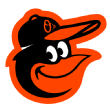 Ryan Mountcastle, ??, Baltimore Orioles
Ryan Mountcastle, ??, Baltimore Orioles
Age: 21 (2/18/1997)
Bats: R | Throws: R
6-foot-3 | 195 pounds
Top level: Double-A
If Mountcastle had a clear position, he'd make the list. If Mountcastle showed more patience at the plate, he'd probably make the list even without a position.
Those two flaws combined to keep him out of the top 100, though I do believe in his ability to hit and eventually hit for a good amount of power. He isn't going to profile on a corner with a 2.8 percent walk rate -- even doubling that probably isn't enough -- and his arm is not consistently strong enough to say he'll definitely stay at third, even though he has the hands and footwork to be at least average there.
I've seen Mountcastle throw from third on a line to the first baseman, and I've seen him throw wounded sparrows across the diamond. The risk that he ends up a low-OBP left fielder is enough to exclude him from the top tier, but he earns this year's title of prospect No. 101.
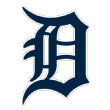 Derek Hill, CF, Detroit Tigers
Derek Hill, CF, Detroit Tigers
Age: 22 (12/30/1995)
Bats: R | Throws: R
6-foot-2 | 195 pounds
Top level: high-A
Hill made my top 100 in 2015 after the Tigers took him with their first-round pick the previous June, but his pro career was plagued by injuries, including an August 2016 Tommy John surgery that kept him out until the middle of last year.
When he returned to low-A West Michigan, he showed the same dynamic tools that made him a first-rounder, while also bringing a better approach and some more impact with the bat. He's already a plus defender in center with plus speed, and his swing works well for contact, albeit probably not home run power.
He's 22 now and has played all of nine games above low-A, so while he looks poised for a breakout year, his inexperience and poor performances pre-injury keep him off the list.
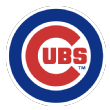 Jose Albertos, RHP, Chicago Cubs
Jose Albertos, RHP, Chicago Cubs
Age: 19 (11/7/1998)
Bats: R | Throws R
6-foot-1 | 185 pounds
Top level: Class A (Short)
Albertos has top-50 overall potential, maybe more, with a combination of stuff, delivery and feel for pitching, but he has barely pitched in pro ball, between minor injuries and the Cubs' babying him.
Albertos will show a 60 fastball and changeup and flash an above-average breaking ball. When he has pitched, all of 47 innings in two seasons, he has thrown strikes and missed bats, though the command is still far from major-league average.
The Mexican right-hander will pitch at 19 this year and should be ready for full-season ball. If he has a healthy season in which he can throw 100 innings or so, we'll get a better read on how real he is as a top prospect.
 Kevin Newman, SS, Pittsburgh Pirates
Kevin Newman, SS, Pittsburgh Pirates
Age: 24 (9/4/1993)
Bats: R | Throws: R
6-foot-1 | 180 pounds
Top level: Triple-A
Newman was in the top 100 the past two years, but he's going to need a shift in his approach to get back to that level, as pitchers started working him differently last year to take advantage of his contact orientation.
Newman has excellent hand-eye coordination and rarely strikes out, ranking in the top 5 percent of Eastern League hitters for contact rate last year and top 10 percent in the International League, but that same skill has led to his swinging earlier in the count at pitches rather than looking for something to drive. He has average or more raw power, but it hasn't shown in games, though the Pirates have worked on getting him to use his lower half more.
Newman ran plus in college but has been just average in pro ball, with enough range and good hands to stay at short. I'm still bullish on Newman as an above-average regular, buoyed by some in-season improvements last year, but the overall body of work pushes him just outside the top 100.
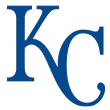 Khalil Lee, CF, Kansas City Royals
Khalil Lee, CF, Kansas City Royals
Age: 20 (6/26/1998)
Bats: L | Throws: L
5-foot-10 | 170 pounds
Top level: Class A
Lee had one of the most fascinating stat lines of any prospect in 2017.
As a 19-year-old who was a two-way player in high school, Lee went right to a full-season league and had a Rob Deer-like season, with a 47 percent three true outcomes (BB, K, HR) rate, tying for second in the Sally League in homers while leading it in strikeouts (by 22!) and finishing third in walks.
When he put the ball in play, he did some damage, but he doesn't have much of a two-strike approach right now, leading to the huge strikeout total. He can really throw, and he's an above-average runner, but he was caught in nearly half his stolen base attempts (20-for-38, a 53 percent success rate). There's a great power/speed profile here that would play even if he ends up in right field, but first he's going to have to show he can hit enough to get to it.
 Estevan Florial, CF, New York Yankees
Estevan Florial, CF, New York Yankees
Age: 20 (11/25/1997)
Bats: L | Throws: R
6-foot-1 | 185 pounds
Top level: Double-A
On raw tools, Florial would go somewhere in the top half of the list. Maybe in the top 25, as the Haitian-born outfielder has huge bat speed, plus raw power and plus speed, and posted a very promising .298/.372/.479 line as a 19-year-old at two levels last year, mostly in low-A.
His pitch recognition, however, is a huge problem: He struck out 148 times last year, 31 percent of his plate appearances, in large part because he does not seem to recognize changing speeds at all. I personally saw eight strikeouts from him between the regular season and the AFL (in which he was among the youngest players) and saw him punch out on breaking balls down, breaking balls away, fastballs away and fastballs up, plus some bad chases on changeups below the zone.
Players can improve their pitch recognition with repetitions, but baseball history is littered with examples of prospects who couldn't, and Florial has a very long way to go before his projected performance matches his pure physical ability.
 Domingo Acevedo, RHP, New York Yankees
Domingo Acevedo, RHP, New York Yankees
Age: 24 (3/6/1994)
Bats: R | Throws: R
6-foot-7 | 250 pounds
Top level: Triple-A
Acevedo has a huge arm, touching 100 at times and sitting 94-96 even on his worst days. He rarely walks guys, with two bad triple-A starts the only blemish on his record of control.
The strike-throwing bit is surprising if you've seen him, as his delivery is uncoordinated, and he doesn't repeat it, with more control than command. His changeup is above-average with good ride down and away to his arm side, but his slider is all over the place, from average to unusable, with poor command of the pitch.
He's built a lot like Dellin Betances -- I swear, the Yankees own a golden goose that just keeps laying eggs that hatch gigantic right-handed pitchers with huge velocity -- and I think that's his most likely outcome: a power reliever in late innings.
 Hunter Harvey, RHP, Baltimore Orioles
Hunter Harvey, RHP, Baltimore Orioles
Age: 23 ( 12/9/1994)
Bats: R | Throws: R
6-foot-3 | 175 pounds
Top level: Class A
Harvey was briefly in my overall top 10 before two years of injuries -- culminating in Tommy John surgery -- wiped him off the prospect map.
He returned this past summer and showed the huge fastball again, while the curveball was down a grade or so, and the cross-body delivery he developed in his first year in pro ball is still there. That delivery might have been connected to the injuries -- guys who come across their bodies do seem to develop more arm injuries, but it's never the definite cause with any one pitcher -- and the fact that he hasn't corrected it is concerning.
Crossfire guys also struggle to command the ball to their glove side. The curveball could still improve the more he pitches, and his changeup has progressed enough to make him a true three-pitch guy. A good healthy year in 2018 will tell us a lot about his future and durability.
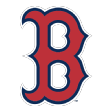 Tanner Houck, RHP, Boston Red Sox
Tanner Houck, RHP, Boston Red Sox
Age: 22 (6/29/1996)
Bats: R | Throws: R
6-foot-5 | 220 pounds
Top level: Class A (short)
If Houck shows that he can start, he's a top-100 prospect.
There's a lot of question about whether that's the case with him, as he's primarily a two-pitch guy (two-seamer and breaking ball) with some reliever-ish characteristics in his delivery and below-average command. He also dominated a great conference for three years at Missouri, and there's no question about his aggressiveness on the mound or his size and frame.
He does need to develop a change-of-pace pitch, and mixing in a four-seamer to up and down with his two fastballs would keep him from getting hit when he tries to use the two-seamer up. I lean slightly reliever on Houck's future, but there are valid reasons the Red Sox think that's wrong.
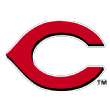 Jose Israel Garcia, SS, Cincinnati Reds
Jose Israel Garcia, SS, Cincinnati Reds
Age: 20 (4/5/1998)
Bats: R | Throws: R
6-foot-2 | 175 pounds
Top level: Rookie
The Reds signed the Cuban shortstop for $5 million just before the end of the 2016-17 international period, after which he would have been subject to the new hard caps on international amateurs.
He hasn't played a game in pro ball, so it's all scouting reports at this point, but he's a plus runner with a good arm and an everyday shortstop unless he outgrows the position, with a loose body and good actions. He has bat speed, with a solid line-drive swing that produces singles right now because he's still so lean and wiry.
We also have no idea what sort of approach he has, so seeing him in actual games this year will go a long way to clarify his potential.
